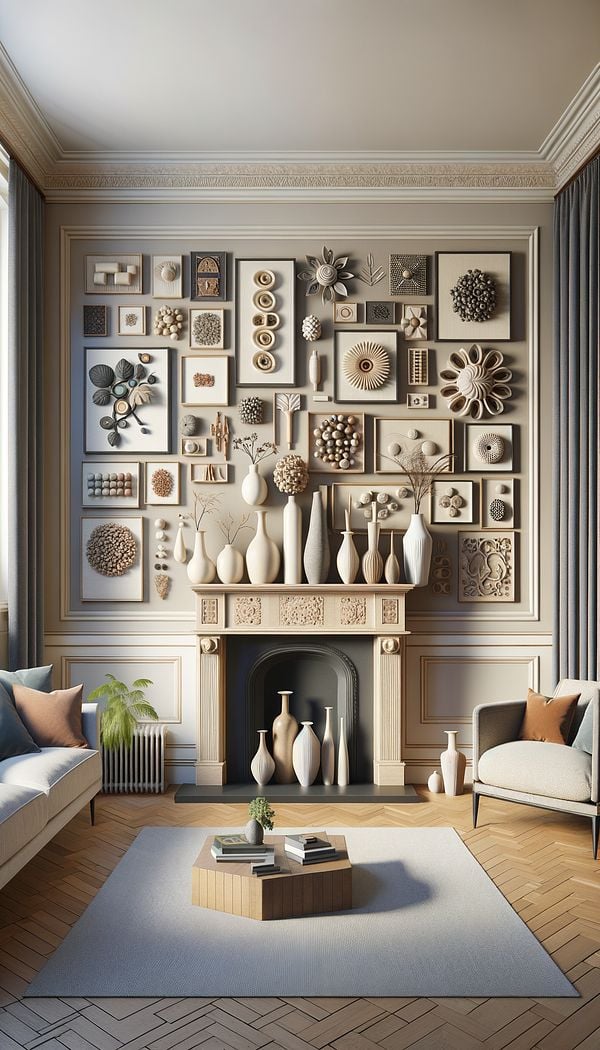What is Cluster?
Cluster refers to a group of objects or elements intentionally placed together to form a cohesive arrangement.
Description
In interior design, a cluster is a strategic composition of objects, furniture, or decor that have been grouped together to create visual interest or serve a practical purpose. This technique can be applied in various areas of a home or commercial space, helping to organize or highlight certain features while maintaining a sense of unity. Clustering can be based on color, texture, size, or theme, offering flexibility and creativity in design.
A well-executed cluster takes into consideration balance, proportion, and scale, ensuring the grouped elements complement rather than overpower each other. It can transform a mundane space into one that feels curated and intentional. Whether you're clustering art pieces on a wall, grouping a set of vases on a mantle, or arranging furniture in a living room, the key is to achieve harmony and interest.
Clusters can also serve practical purposes. In a workspace, for example, clustering desk accessories or tech gadgets can create a cleaner, more organized area, enhancing both aesthetics and functionality. Similarly, in a kitchen, clustering utensils or appliances based on their usage can streamline workflows and improve efficiency.
Usage
Clusters are common in areas like gallery walls in living rooms, where various art pieces are grouped together to form a focal point. They can also be seen in tabletop arrangements, where candles, books, and small sculptures create a compelling vignette. In kitchens, clusters may include grouping cooking tools or decorative jars for both function and decoration.
FAQs
-
Is clustering only used for small objects or decor items?
No, clustering can be applied to a variety of elements, including larger items like furniture or outdoor planters, depending on the space and design objectives.
-
Can clustering help in small spaces?
Yes, carefully curated clusters can add depth and interest to small spaces without cluttering, making them appear larger and more organized.
-
Does clustering require items to be of the same color or style?
No, while some clusters focus on similarity in color or style, others can be effectively achieved by mixing textures, sizes, or contrasting colors for a dynamic look.
Practical Application
When applying the concept of clustering in interior design, start with a clear focal point and build your cluster around it. Consider the balance and proportion of the items being grouped to ensure they complement the overall aesthetics of the room. Experiment with different compositions by grouping items in odd numbers, which is often more visually appealing. Remember, the goal of clustering is to create a cohesive look that adds character and interest to your space.
-
Decorative Objects240 articles
-
Decorating Principles & Elements330 articles
-
Kitchen & Bath37 articles
-
Accessibility & Ergonomics30 articles
-
Wall Treatments & Finishes157 articles
-
Ceramic TilesCeramic tiles are durable, versatile materials used for covering floors, walls, and various surfaces.
-
CohesiveCohesive refers to a design that appears unified and harmonious, with all elements working together effectively.
-
GildingGilding is the application of a thin layer of gold or gold-like material to a surface.
-
Duco FinishDuco finish is a high-quality paint finish known for its smooth, durable, and glossy appearance.
-
Queen AnneAn architectural and furniture design style that originated in the late 17th and early 18th centuries, characterized by its elegant and ornate features.
